Sport utility vehicles are a go-to choice for busy moms who juggle family responsibilities, work commitments, and everything in between.
These vehicles offer the versatility, space, and safety required to handle the chaos of daily life, often with a touch of luxury to make the ride more enjoyable.
But which SUVs rise to the top when it comes to meeting the needs of modern mothers? Which ones are reliable, adaptable, safe, and still offer a premium driving experience?
5 Vehicles That Are Great for Moms
When it comes to choosing a vehicle for a mom’s daily grind—whether it’s school drop-offs, grocery hauls, sports practices, or weekend getaways—functionality, safety, and comfort are non-negotiable. But that doesn’t mean style and performance have to take a backseat.
Today’s market offers a range of vehicles that blend practicality with polish, giving moms everything they need without compromising on features they want.
In this article, we’ve rounded up five vehicles that go above and beyond to meet the real-world demands of motherhood—each one offering a winning combination of space, reliability, and thoughtful design.
1. Acura MDX
One of the top choices for moms seeking comfort, practicality, and refined style in an SUV without dealing with overly bulky dimensions is the Acura MDX. This three-row SUV is available in six trims, starting with a base model priced at $51,200 with front-wheel drive.
Most trims come equipped with a 3.5-liter V6 engine producing 290 horsepower and 267 lb-ft of torque. For those wanting more performance, the Type S Advance features a turbocharged 3.0-liter V6 delivering 355 hp and 354 lb-ft.
The MDX accommodates up to seven passengers and offers a maximum cargo capacity of 95 cubic feet. A removable middle seat in the second row provides more flexible access to the third row, making it easier for families on the move.
Although built by Honda’s luxury division, the MDX ups the ante with higher-end features and a host of advanced safety technologies like a collision-mitigation braking system and pedestrian detection.
When it comes to driving dynamics, the Type S stands out thanks to its adaptive air suspension. It glides over poor road surfaces in standard mode, minimizing driver distraction.

While its body leans more under braking and acceleration compared to stiffer German rivals, that characteristic gives it a more traditional SUV vibe.
Complementing the suspension, the transmission and electronic braking systems help deliver a smooth and composed ride.
The 2025 Acura MDX stands out as an engaging mid-size crossover that delivers a premium driving experience wrapped in an attractive design.
While it doesn’t quite reach the level of luxury offered by high-end competitors like the Genesis GV80, Mercedes-Benz GLE-Class, or Volvo XC90, it still manages to provide a refined feel that justifies its price tag—especially when compared to its more mainstream counterpart, the Honda Pilot.
The third-row seats are best suited for children, but the front and second rows offer comfort and amenities that will satisfy adult passengers. Behind the wheel, the MDX truly shines, thanks to its nimble handling that adds a dose of fun to everyday driving.
Most trims are powered by a capable 290-horsepower V6 engine, but those opting for the sportier Type S trim will enjoy a twin-turbocharged V6 generating 355 horsepower.
The Type S also features an air-spring suspension that enhances handling agility while providing a smoother ride when desired. For buyers who aren’t fixated on brand prestige, the MDX presents a compelling mix of performance, comfort, and value.
2. Lincoln Aviator
For mothers who need a roomier and more upscale SUV to accommodate a larger family, the Lincoln Aviator is a strong contender. Available in three trims, the Aviator starts with the Premiere at a base price of $58,930.
The hybrid powertrain option has been dropped in the latest update, so all trims are now powered by a robust 3.0-liter twin-turbocharged V6 making 400 horsepower and 415 lb-ft of torque.
The Aviator also seats seven and offers 77.7 cubic feet of cargo space when the second and third rows are folded.
Second-row passengers get 39 inches of legroom, while those in the third row have 29.2 inches. Headroom maxes out at 39.7 inches in the second row and 36.9 inches in the third.
Despite its larger dimensions, the Aviator provides a smooth and comfortable ride, enhanced by a suite of modern safety features that make it ideal for family-focused drivers looking to travel in comfort and style.
The biggest letdown with the new Aviator is that it didn’t receive the same significant interior tech upgrade as the refreshed Nautilus or the upcoming redesigned Navigator.
Those models feature a stunning 48-inch dash-spanning display that sets a new standard for digital interfaces, offering beautiful graphics, intuitive controls, and a clean layout that feels refined rather than overwhelming.
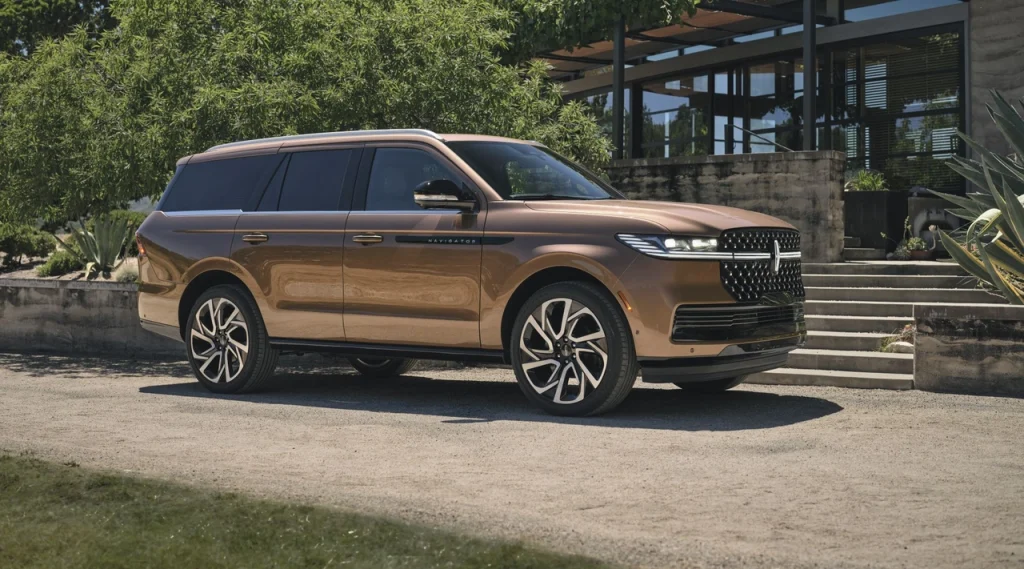
Without a previous model for side-by-side comparison, it would be difficult to identify what exactly has changed inside the new Aviator.
That said, this refresh is still a success in many ways. The main screen now runs the Lincoln Digital Experience infotainment system.
While there were a few bugs during testing—issues likely to be resolved through over-the-air updates—the interface itself is streamlined and user-friendly.
Physical buttons have been reduced, but, somewhat unexpectedly, their absence wasn’t missed. The overall cabin materials and design continue to feel upscale and visually appealing.
The second row remains roomy and comfortable, and in our Reserve trim model, the outboard seats came with both heating and ventilation—a welcome touch.
As before, the third row isn’t especially spacious, but the sliding second-row seats allow for temporary adult use in the back.
Still, longer rides might draw complaints about limited leg support or the noticeable drop-off in material quality compared to the front two rows.
A major advantage: the third-row power-folding function is impressively fast.
There are dedicated buttons to raise or lower each side individually or both at once, and all respond to a single press—no need to hold them down like in many other SUVs. This is exactly how power-folding third rows should function.
3. Ford Explorer
Available in four trims, the Explorer lineup begins with the Active trim at a starting price of $39,755.
On the opposite end of the spectrum, the Platinum trim offers a premium experience that rivals some of the best offerings from luxury automakers.
Three of the four trims are powered by a 2.3-liter turbocharged four-cylinder engine producing 300 horsepower and 310 lb-ft of torque. The more performance-oriented ST trim steps things up with a 3.0-liter twin-turbo V6 that generates 400 hp and 415 lb-ft.

Depending on the configuration, the Explorer can accommodate either seven or eight passengers and provides up to 85.8 cubic feet of cargo space with the rear seats folded.
Standard safety equipment includes rear parking sensors, lane-keeping assist, and a driver alert system. The EcoBoost V6 delivers the kind of smooth acceleration you’d typically associate with luxury SUVs, accompanied by a pleasing engine note.
Earlier versions of the Explorer were criticized for jerky shifts from the 10-speed automatic transmission, but that issue has been addressed with a revised tuning.
The result is a refined driving experience and effortless passing power that outperforms some far more expensive SUVs.
4. Toyota RAV4
The Toyota RAV4 is an excellent SUV choice for moms looking for dependability and versatility. It’s perfect for day-to-day family errands as well as more adventurous weekend excursions.
It’s no surprise the RAV4 claimed the title of best-selling vehicle in the U.S. last year, overtaking the Ford F-150’s decades-long reign.
The RAV4 is powered by a 2.5-liter four-cylinder engine producing 203 horsepower and 184 lb-ft of torque. There’s also a hybrid version available that offers slightly more power.
While the RAV4 is limited to seating five people and provides up to 69.8 cubic feet of cargo space, it remains a well-rounded choice for smaller families.
Comfort is a strong suit, and the model comes equipped with key safety features such as blind-spot monitoring and a pre-collision detection system.
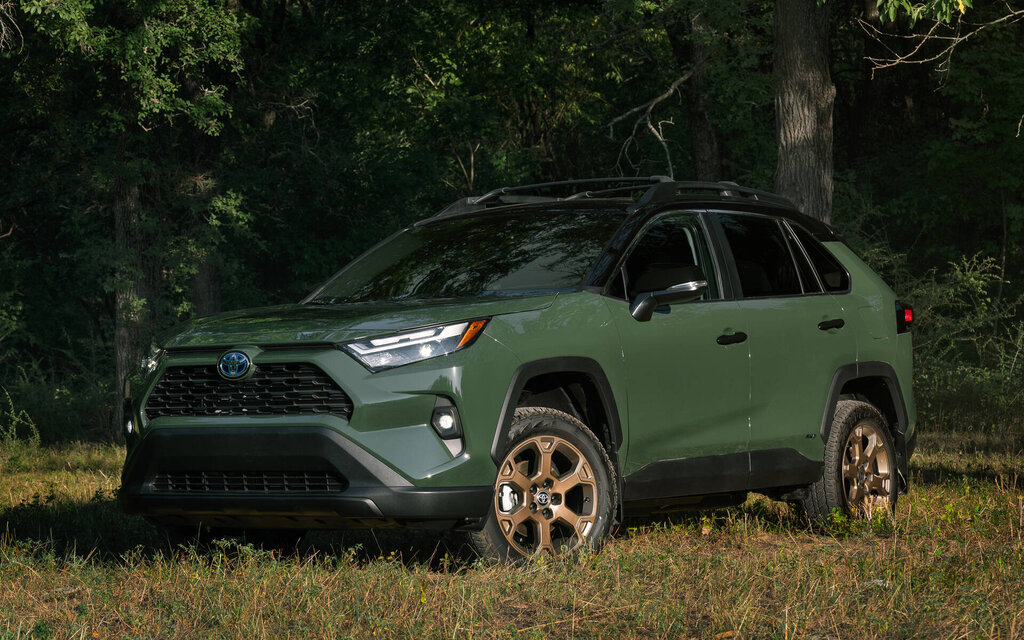
Its class-leading reliability makes it a favorite among moms who want peace of mind behind the wheel.
SUVs are often seen as fuel-hungry and environmentally damaging, but the Toyota RAV4 defies that stereotype.
It actually produces less CO₂ than some smaller vehicles, thanks to its efficient petrol plug-in hybrid powertrain. This makes it one of the most eco-friendly family SUVs available, particularly with the hybrid version no longer part of the lineup.
Positioned above the Toyota C-HR and below the rugged Toyota Land Cruiser, the RAV4 is closely related to the Suzuki Across, although it is not available as a seven-seater, despite its larger size.
Competing in a crowded field, the RAV4 goes head-to-head with models like the Ford Kuga, Hyundai Tucson, Kia Sportage, and Volkswagen Tiguan, as well as newer entrants like the BYD Seal U, Jaecoo 7, and MG HS.
The Toyota RAV4’s plug-in hybrid engine makes it an attractive choice for both company car drivers and private buyers, boasting excellent resale value, impressive fuel economy, and Toyota’s reputation for reliability.
For those considering a purchase, the Design trim is the one to go for, offering a well-rounded set of features. However, despite these strengths, the RAV4 does come with some drawbacks.
Its infotainment system is outdated, and rivals generally offer better driving dynamics. Moreover, unlike some competitors, the RAV4 doesn’t offer a third-row seat option.
New prices start from £42,439, with leasing options available from £407/month. The recommended model is the RAV4 2.5 PHEV Design 5dr CVT, priced at £44,395.
On the road, the RAV4 delivers solid performance. It accelerates from 0 to 62 mph in just 6.0 seconds, thanks to its 2.5-litre petrol engine and two electric motors, which provide a combined 302bhp and four-wheel drive.
This makes it quicker than plug-in hybrid versions of the MG HS and Range Rover Evoque, and it outpaces most rivals like the Ford Kuga PHEV and Honda CR-V PHEV.
On electric power alone, the RAV4 can reach motorway speeds, and during real-world testing, we managed to achieve more than 30 miles on a full charge.
Toyota’s official range is 46 miles, which beats rivals like the Kuga and Evoque, although the MG HS and Volkswagen Tiguan PHEVs offer even greater all-electric ranges of over 70 miles.
5. Audi SQ7
The Audi SQ7 is by far the most performance-oriented, aggressive, and luxurious SUV on this list.
While the standard Q7 is a solid family vehicle in its own right (which we’ll touch on separately), the SQ7 starts at $90,800—and there are several good reasons for that price.
Under the hood lies a 4.0-liter twin-turbo V8 that churns out 500 horsepower and 568 lb-ft of torque, rocketing the SQ7 from 0 to 60 mph in just four seconds.
Despite its muscle car-level performance, the SQ7 remains a true Audi in terms of comfort, build quality, and refinement.
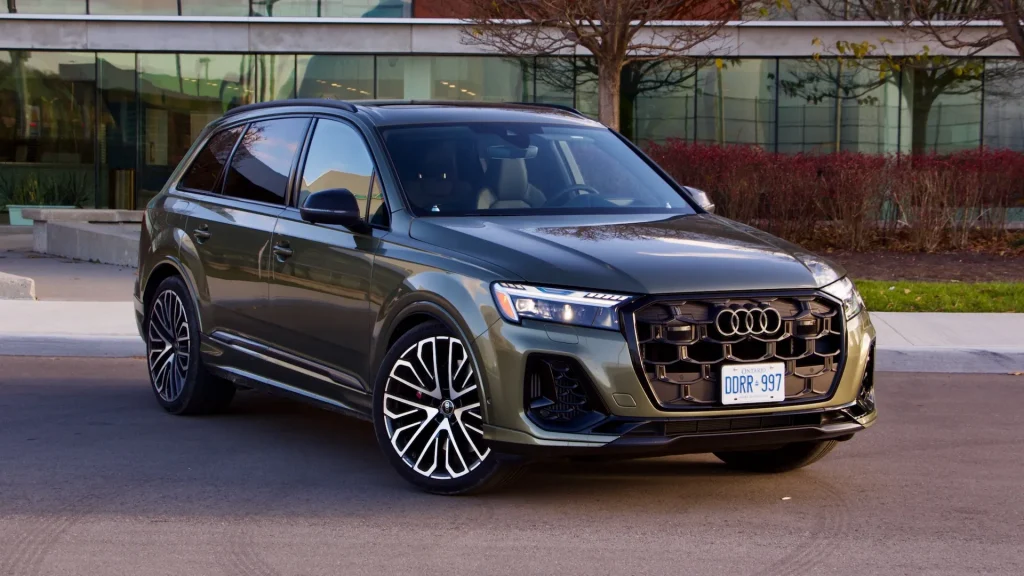
It offers seating for seven, with third-row passengers getting 35.9 inches of headroom and 29.2 inches of legroom. Key safety technologies include forward collision avoidance, lane-departure warning, and lane-keeping assist.
The cabin is premium in every sense—filled with high-end materials and thoughtful design.
However, there are compromises. The second-row legroom is slightly reduced to make space for a relatively cramped third row, which also lacks air vents.
As noted in reviews of the regular Q7 and Q8, Audi’s three-row SUV lineup would benefit from a longer wheelbase to truly serve large families. As it stands, the SQ7’s third row is best reserved for occasional use rather than daily hauling of kids.
Worst Cars For Moms
Choosing the right car is a big decision for any mom juggling the demands of family life—but not all vehicles make the cut.
While some cars promise practicality, safety, and reliability, others fall flat with cramped interiors, poor safety scores, high maintenance costs, or frustrating everyday usability.
In this article, we’re calling out the worst cars for moms—models that simply don’t hold up when it comes to what matters most for family life.
If you’re in the market for a mom-friendly ride, these are the ones you’ll want to steer clear of.
1. 2022 Toyota C-HR
The 2022 Toyota C-HR, which marked the end of its production run after debuting in 2018, offers a few notable advantages, including a strong suite of standard safety features like blind-spot monitoring, adaptive cruise control, lane-departure warning, and automatic emergency braking.
It also includes an infotainment system that’s simple and user-friendly. However, these positives are not enough to compensate for the vehicle’s major drawbacks.
The second-row seating is cramped, cargo space is limited, and its engine struggles with acceleration while producing an excessive amount of noise.
These shortcomings make the C-HR a poor choice for moms looking for a practical and comfortable family vehicle.
The 2022 Toyota C-HR offers a design full of personality and curb appeal, but its driving experience is uninspiring.
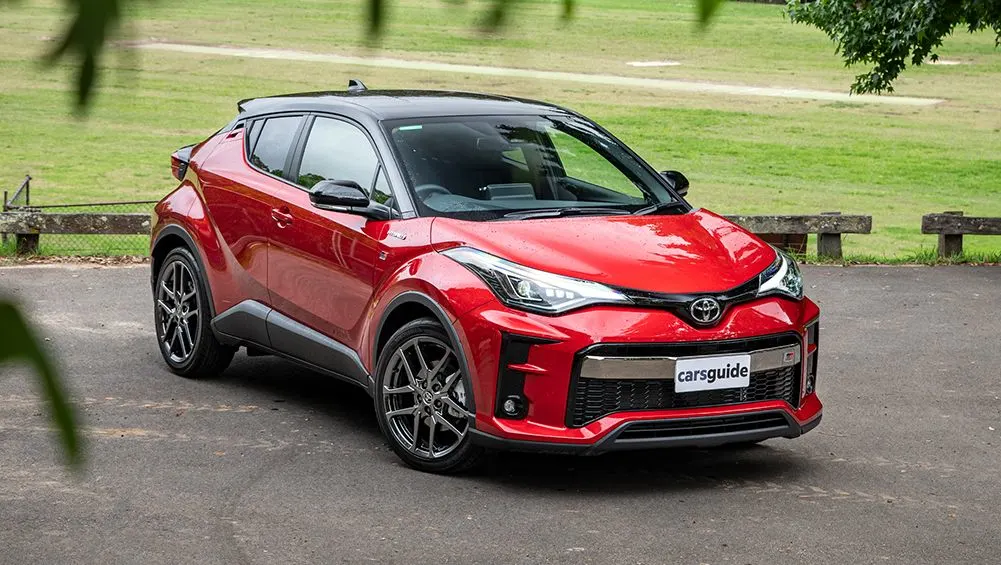
Every model comes equipped with a sluggish four-cylinder engine, a continuously variable automatic transmission (CVT), and front-wheel drive, with no option for all-wheel drive.
Acceleration is painfully slow, and while it offers little excitement on winding roads, the C-HR does provide a fairly comfortable ride.
The rear seat area is cramped, but the rest of the cabin is generally practical. Some of the C-HR’s quirky exterior design elements are reflected inside, including an asymmetrical dashboard, shiny black trim, and a textured headliner.
For 2022, Toyota made a few changes. The base LE trim has been discontinued, leaving the XLE as the starting point in the lineup. The color palette now includes Wind Chill Pearl, which replaces Blizzard Pearl, and it can be paired with a black contrast roof.
Toyota has also confirmed that the C-HR will not be returning for the 2023 model year, so if you’re a fan of this funky crossover, the 2022 model is your last opportunity to own one.
The 2022 Toyota C-HR is priced from $25,615, with the cost going up to $28,635 depending on the trim and options selected.
The XLE trim is recommended, as it comes equipped with several desirable features such as 18-inch wheels, a proximity key with passive entry, blind-spot monitoring, heated exterior mirrors, and a leather-wrapped steering wheel.
While Toyota offers few additional options beyond accessories, we’d recommend sticking with the XLE to keep the price more affordable.
Under the hood, the C-HR’s four-cylinder engine leaves much to be desired. It’s in desperate need of a turbocharger or some other boost, as it struggles to propel the vehicle with any real enthusiasm.
In testing, the C-HR took an agonizing 11.0 seconds to go from zero to 60 mph, making it significantly slower than many of its competitors.
While the C-HR’s throttle is responsive enough for normal driving around town, pushing the accelerator to the floor results in the engine revving at its peak, staying there as the CVT struggles to adjust its ratios and deliver any significant acceleration.
On the road, the C-HR provides a comfortable ride, though it doesn’t stand out in its segment.
The suspension rebounds quickly over larger road imperfections, but it struggles over patched or broken pavement at speed, sending harsh bumps reverberating through the cabin.
The steering feels precise, with the front wheels responding directly to driver input, and handling is lively, with minimal body roll. Despite its performance limitations, the C-HR remains playful behind the wheel.
2. 2022 Mitsubishi Outlander Sport
While 2022 Mitsubishi Outlander Sport it does offer 21.7 cubic feet of cargo space behind the rear seats and a user-friendly infotainment setup, its flaws are difficult to overlook.
The suspension does little to absorb bumps, making for a rough and unpleasant ride, and both available powertrains suffer from sluggish acceleration and excessive noise.
Additionally, although the cabin is solidly built, the materials used are cheap, and the interior design lacks inspiration.
Overall, the Outlander Sport fails to deliver the comfort, performance, and refinement that moms need in a reliable everyday SUV.
The Outlander Sport is one of two subcompact crossovers in Mitsubishi’s lineup, alongside the Eclipse Cross. This vehicle is based on a model that has been around since 2011 but received a significant refresh for 2020.
For those looking for simple transportation and long warranty coverage, the Outlander Sport might seem appealing, but there are certainly better options within the segment.
For 2022, the Outlander Sport receives some updates, including synthetic leather and suede interior upholstery, now included on the SE trim.
The GT trim also sees some upgrades, with genuine leather seating surfaces and a four-way power-adjustable driver’s seat becoming standard.
Additionally, the LE trim and above now come with one USB type-A and one type-C port added to the second-row seats.
What we think: In short, if your budget allows for it, you might want to consider a different subcompact crossover than the Outlander Sport.
The long-term appeal of its six-year/60,000-mile general warranty and 10-year/100,000-mile powertrain coverage is a plus for drivers who prioritize peace of mind. However, beyond the warranty, the Outlander Sport falls short in many areas.
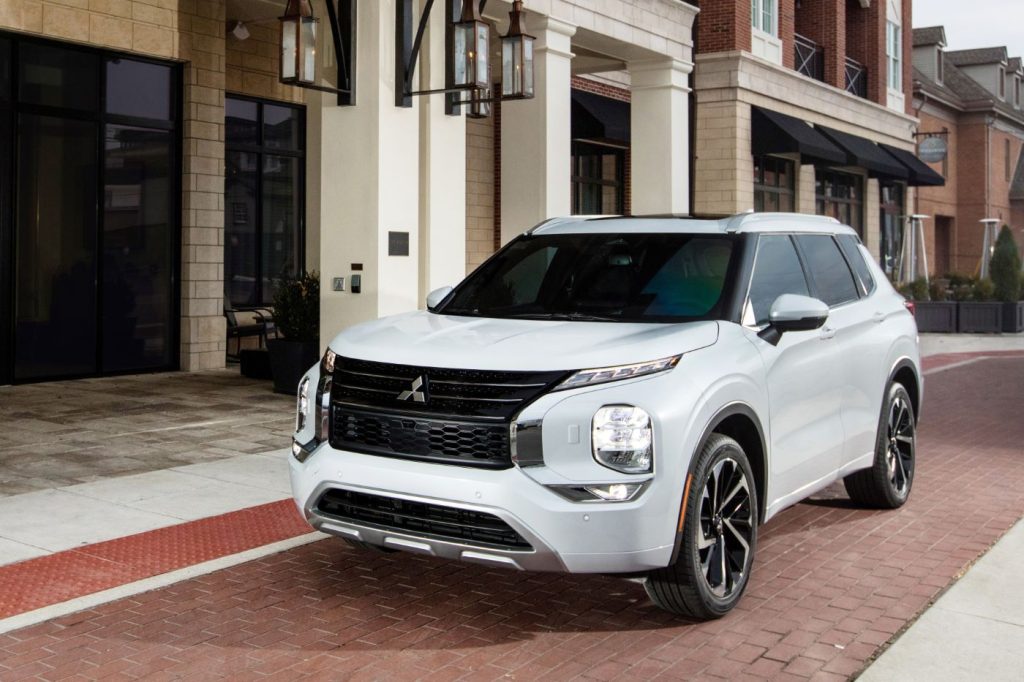
Its powertrain feels unrefined and lacks impressive fuel efficiency. The interior is filled with low-end materials, and cargo capacity is limited.
The infotainment system, though quick to respond, lacks modern features such as Apple CarPlay and Android Auto, which highlights the Outlander Sport’s age.
Additionally, while the warranty may offer reassurance, the vehicle’s crashworthiness ratings and limited list of driver assistance technology are concerning.
While Mitsubishi has updated the Outlander Sport’s exterior with fresh styling elements, these updates aren’t enough to make it stand out in a crowded market. There are simply too many better alternatives to justify choosing the Outlander Sport.
The Outlander Sport comes with a 2.0-liter inline four-cylinder engine as standard, producing 148 horsepower and 145 lb-ft of torque.
This engine is paired with a CVT automatic transmission, and front-wheel drive (FWD) is standard, with all-wheel drive (AWD) optional.
Fuel economy for this configuration is rated by the EPA at 24 mpg city and 30 mpg highway with FWD, and 23 mpg city and 29 mpg highway with AWD.
The GT trim is equipped with a 2.4-liter inline four-cylinder engine that produces 168 horsepower and 167 lb-ft of torque, also mated to a CVT with optional AWD. In testing, this engine brought the 0-60 mph time down to 8.5 seconds in an AWD model.
Despite the power boost, the fuel efficiency of the 2.4-liter engine isn’t significantly better, earning an EPA rating of 23 mpg city and 29 mpg highway with FWD, and 23 mpg city and 28 mpg highway with AWD.
3. 2022 Toyota Sequoia
To its credit, 2022 Toyota Sequoia does offer a spacious interior with plenty of room for both passengers and cargo, and its powerful V8 engine delivers confident performance. However, the list of downsides outweighs these strengths.
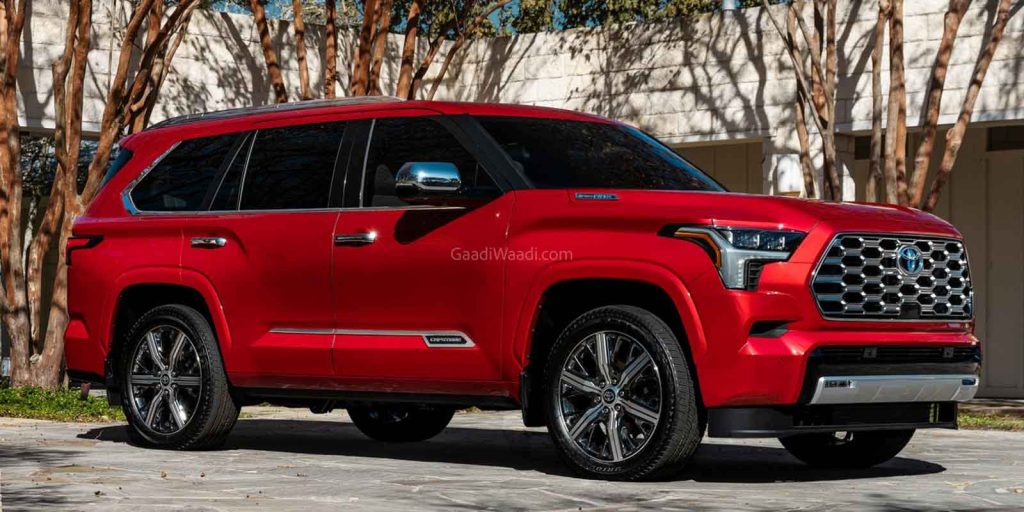
The interior is filled with hard plastics that give it a cheap feel, the fuel economy is abysmal at 13 mpg in the city and 17 mpg on the highway, and the ride quality is uncomfortably firm.
On top of that, the infotainment system is outdated, and the Sequoia has the lowest towing capacity in its class, making it a poor choice for those who need serious hauling capability.
4. 2022 Ford EcoSport
The 2022 Ford EcoSport finds itself at the very bottom of U.S. News’ affordable subcompact SUV rankings for that year, and it’s clear why.
Although this model, which launched in 2018 and ended with the 2022 version, isn’t entirely without merit—it does have agreeable handling, a simple infotainment system, and more cargo space than some rivals—these few positives can’t make up for its numerous flaws.
Only one engine is available, and it’s underpowered, resulting in sluggish acceleration.
While the cabin includes some appealing materials, it is mostly filled with hard plastics, creating a cheap, uninspired atmosphere that fails to justify its presence in a competitive segment.
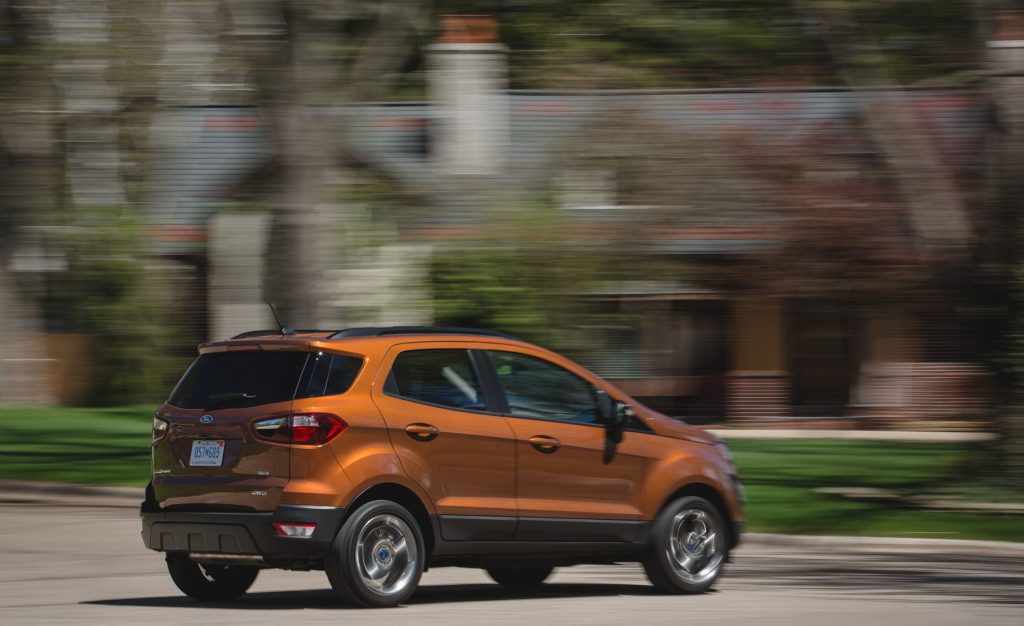
The 2022 Ford EcoSport is a subcompact SUV that comes standard with all-wheel drive and a 2000-pound tow rating. These two features are about the extent of its appeal.
Even before Ford made the decision to discontinue it—due to global business moves—the EcoSport struggled to stand out in a crowded segment filled with competitors that offered better driving experiences, more refined interiors, and better fuel efficiency.
The EcoSport never really represented good value, and with the introduction of the Ford Maverick pickup, it became even less competitive. The Maverick is not only more practical, but it’s also less expensive and more fuel-efficient.
The 2022 EcoSport’s only redeeming qualities, aside from the features mentioned earlier, are its elevated driving position and maneuverability, but these aspects don’t make it stand out enough to justify a closer look.
For 2022, things took a turn with Ford’s announcement that they would end production of vehicles built in India, effectively signaling the EcoSport’s demise. The 2022 model is set to be the last, and there are a couple of key differences from the previous year’s lineup.
The biggest change is that front-wheel drive, which was once paired exclusively with the turbocharged three-cylinder engine, is no longer available.
Every 2022 EcoSport now comes standard with all-wheel drive and a non-turbo four-cylinder engine. This change also resulted in a starting price that is $1,595 higher than before.
The 2022 Ford EcoSport has a starting price of $23,335, with prices rising to $29,690 depending on the trim and options. Despite the range of trims, we can’t recommend any EcoSport trim other than the base S model.
Even though the base S model comes with standard all-wheel drive and is priced similarly to other subcompact crossovers, it requires so many compromises that it severely undermines its overall value.
The 2022 EcoSport is only available with a 166-hp four-cylinder engine, a six-speed automatic transmission, and all-wheel drive. However, it’s far from quick.
The EcoSport performs best at slower speeds, navigating busy streets with ease, but its vague steering and noisy ride detract from the experience.
While its suspension can’t fully isolate the cabin from rough surfaces, the soft suspension in our Titanium test vehicle did a decent job of cushioning the harshness for occupants.
Unfortunately, the spongy shocks and top-heavy feel led to unruly body movements, which were amplified at higher speeds. The brake pedal on our front-drive Titanium model never felt firm, but it provided a consistent response.
One of the few advantages of the EcoSport is its 2000-pound towing capacity, which is more than most subcompact crossovers can handle.
5. 2022 Mitsubishi Mirage
The 2022 Mitsubishi Mirage, available as both a hatchback and a sedan, aims to appeal to budget-conscious buyers, but it lands far short of expectations.
There are a few selling points: the hatchback version offers a generous 17.1 cubic feet of cargo space behind the rear seats, and the vehicle’s low projected ownership costs make it an economical option.
Still, these positives are not enough to offset the Mirage’s considerable weaknesses.
The engine is severely underpowered, requiring a painful 13 seconds to reach 60 mph—hardly ideal for highway driving.
Inside, the cabin feels cheap, and the overall driving experience lacks the refinement expected from even the most modest subcompacts.
The 2022 Mitsubishi Mirage might make a compelling case for purchasing a used car instead of a new one.
This subcompact hatchback offers a basic driving experience, featuring a spartan interior, a limited list of standard features, and an underwhelming powertrain.
Simply put, the Mirage represents the bare minimum in terms of transportation. Despite these drawbacks, the Mirage has a few redeeming qualities.
One of its strongest points is its fuel efficiency, particularly when equipped with the CVT automatic transmission, which earns an EPA-estimated 39 mpg combined for city and highway driving.
This makes the Mirage one of the most fuel-efficient vehicles in its class. Additionally, the Mirage comes standard with Apple CarPlay and Android Auto smartphone integration, as well as forward collision warning with automatic braking, which are valuable features at this price point.
Another notable advantage is Mitsubishi’s impressive 10-year/100,000-mile powertrain warranty, a benefit you won’t get with a used car.
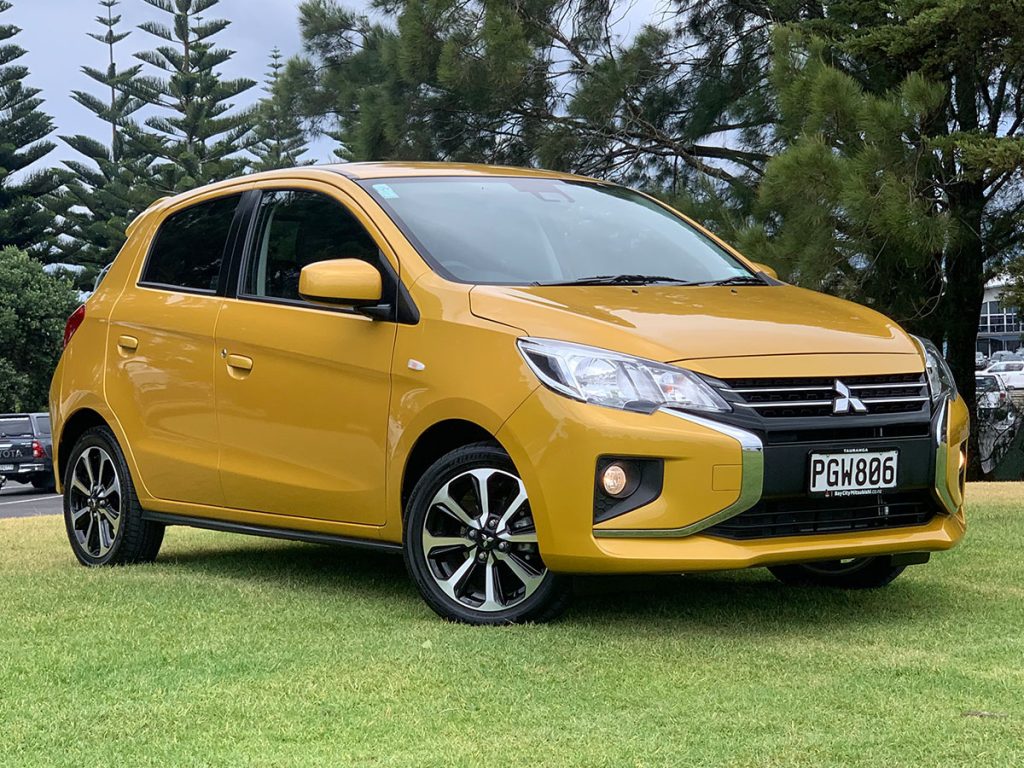
However, the Mirage’s weaknesses are hard to ignore. Acceleration is excruciatingly slow, and the engine itself is noisy and unrefined, creating an overall lackluster driving experience.
Highway driving is particularly unpleasant due to excessive road noise, further diminishing its appeal.
Inside, the Mirage feels cheap, even by the standards of subcompact cars, with a low-budget interior that doesn’t offer much in terms of comfort or refinement.
As for the 2022 model specifically, it introduces a new Black Edition model with unique styling, while the SE trim now comes with automatic headlights as a standard feature.
Despite a cosmetic update in 2021, the Mirage, along with its sibling, the Mirage G4 sedan, has been around for nearly a decade. The dated instrument cluster and dashboard design are a testament to this fact.
If you are considering the Mirage for its affordability, the case for buying it is probably stronger now than it has been in years, especially given the current used car market.
However, it’s worth exploring other options, like the Nissan Versa or Kia Rio, before committing to the Mirage.
For those set on purchasing a Mirage, the base ES model is likely the best choice. The ES offers the lowest starting price and still provides most of the essential features, meaning there’s little reason to opt for the higher trims.

